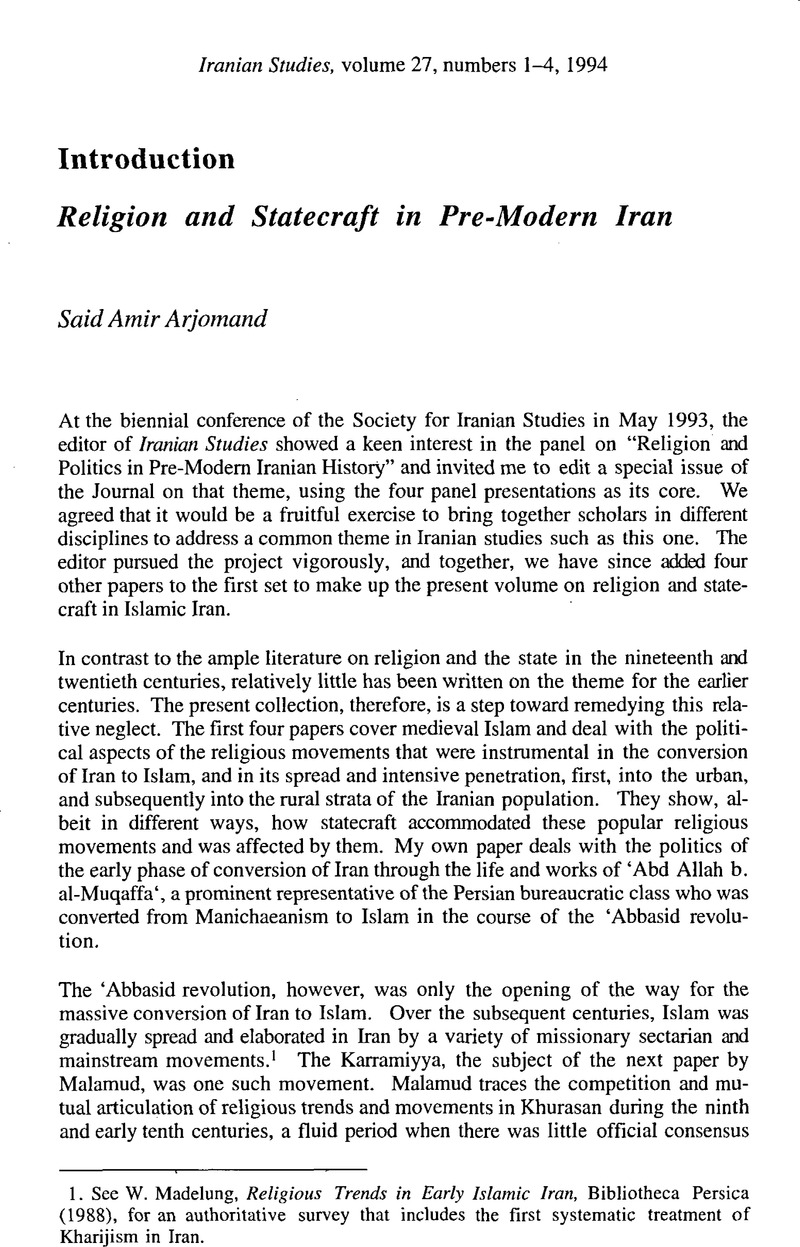Published online by Cambridge University Press: 01 January 2022

1. See Madelung, W., Religious Trends in Early Islamic Iran, Bibliotheca Persica (1988)Google Scholar, for an authoritative survey that includes the first systematic treatment of Kharijism in Iran.
2. See Aubin's, J. valuable contributions, especially Matériaux pour la biographie de Shāh Ni'matullāh Walī Kermānī (Tehran: Institut Français d'Iranologie, 1982Google Scholar [1956]), and “Deux sayyids de Bam au XVè siècle,” Abhandlungen der Geites- und Sozialwissenschaftlichen Klasse, Akademie der Wissenschaften und der Literatur 1 (1956).
3. Danishpazhuh, M. T., “Yak parda az zindigānī-ye Shāh Ṭahmāsb-e Ṣafavī,” Majalla-ye dānishkada-ye adabiyyāt va ‘ulūm-e insānī-ye Mashhad 7, no. 4 (1350 Sh./1972)Google Scholar. The translations were usually dedicated to Shah Tahmasp and sometimes given titles such as Tuḥfa-ye shāhī, Fiqh-e shāhī and Tafsīr-e shāhī. However, Tahmasp's daughters, Pari Khan Khanum and Mahin Banu Sultanum, too, are known to have commissioned translations of Shi'ite religious works into Persian (ibid., 980–81).
4. “The Waning of the Qizilbash: The Temporal and the Spiritual in Seventeenth Century Iran” (dissertation, Princeton University, 1993).
5. Apart from the obvious fact of the overthrow of the Safavids by the Sunni Afghans, suffice it to point out that the last powerful Safavid grand vizier, Fath ‘Ali Khan Daghistani, who was dismissed and blinded the year before the fall of Isfahan, was a Lezgian Sunni. So was his nephew, Lutf ‘Ali Khan, who was the governor of Fars and the last powerful Safavid general until he was dismissed with his uncle. See Roemer, H. R., “The Safavid Period,” in Jackson, P. and Lockhart, L., eds., The Cambridge History of Iran, vol. 6: The Timurid and Safavid Periods (Cambridge, 1986), 319Google Scholar.
6. Hunarfar, L., Ganjīneh-ye āthār-e tārīkhī-ye Iṣfahān (Isfahan, 1334 Sh./1965), 216–17Google Scholar for the text of the inscription in the congregational mosque of Isfahan.